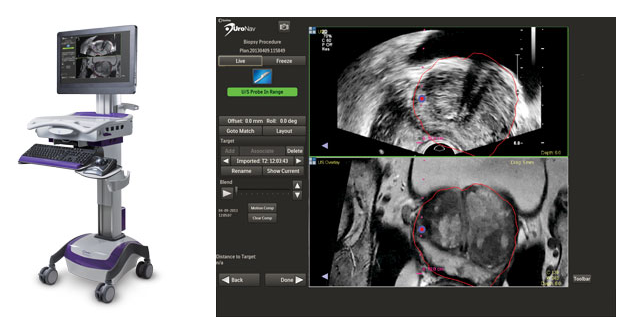MRI-Guided Biopsy: Better Detection Method for Prostate Cancer
/MRI Guided Fusion Biopsy could be a game changer in the field of urology and prostate cancer detection. The fusion of MR/Ultrasound and Standard Biopsy is more targeted than a sole random biopsy and results in less false negatives
Normally, the indication for someone to get a biopsy is either an elevated PSA level (blood test) or abnormalities were found on the prostate from a Digital Rectal Exam (DRE). From there, we perform the traditional method - a random biopsy. A urologist would take 12-14 samples of your prostate to indicate the presence of cancer. But the keyword to remember is random. We didn't have a guided direction in terms of where to sample on the prostate.
The new way of performing a biopsy is called MRI-Guided. A full MRI of the prostate is taken and then fused with ultrasound images to find key hotspots on the prostate. From there, when we perform a biopsy, we're targeting suspicious areas of the prostate, rather than random.
The results?
We're finding an increased rate of aggressive prostate cancers which need to be treated immediately and we're avoiding over treatment and over diagnosis of low risk prostate cancers. It's a much more sophisticated method and helps tremendously in the diagnosis process of prostate cancer. .
For men on active surveillance or watchful waiting, targeted fusion biopsy plays a role as a way to follow up any change in their clinical status and need for further intervention. We can detect low risk prostate cancer and from there, determine if the patient is a good candidate for definitive treatments and close surveillance.
New Study
In a new study from the National Cancer Institute, 1003 men with elevated PSA levels studied over a seven year period, underwent a targeted and standard biopsy. Targeted MR/Ultrasound fusion biopsy diagnosed 461 prostate cancer cases and standard biopsy in 690 men. The targeted biopsy diagnosed 30% more high risk cancers versus standard biopsy. The result showed an increased detection of high-risk prostate cancer and decreased detection of low-risk prostate cancer. In addition 17 percent fewer low-risk cancers were diagnosed.This study concludes the fusion of MR/Guided and Standard Biopsy can diagnose intermediate- to high-risk prostate cancer.
Nearly 1 in 7 men will be diagnosed with prostate cancer in 2015 making that a total of about 220,800 cases. Prostate cancer causes nearly 30,000 deaths every year, making it the second leading cancer killer in men next to lung cancer. Dr. Samadi wants to ensure there is widespread knowledge of prostate cancer being highly curable with a 94 percent 15-year relative survival rate, if detected early.
Looking toward the future, MRI fusion-guided biopsy will continue to improve and ensure extreme accuracy during the prostate cancer diagnosis process. This directly affects how we proceed to treat the disease, especially when it comes to aggressive prostate cancers

